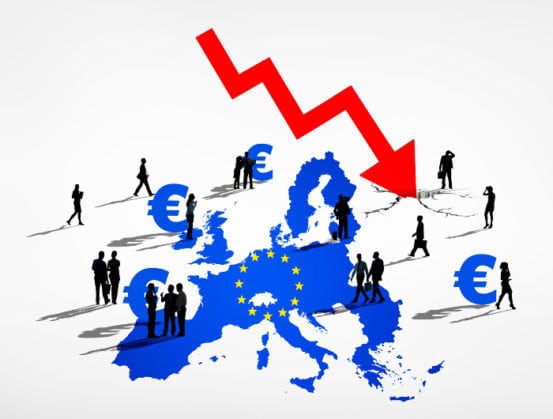The S&P Europe 350 posted 1.66% total return last month and almost hit its record closing price level of 1,655 last seen in the late 1990s.
According to S&P Dow Jones Indices, nearly every equity strategy in the region has gained and the European market has seen significant growth.
However, Hamish Preston, a senior associate for Index Investment Strategy at S&P warned some of the most substantial drawdowns in the S&P Europe 350 have come after the index ended the month above 1,600.
He said: “History therefore suggests that 1,600 may be a ‘resistance level’ – the level that an index has not yet exceeded for an extended period of time. While the index has gone past this level on occasion, it has not maintained it.”
“There are indications that the S&P Europe 350 may be better equipped to do so this time,” he added.
Will history repeat itself?
Preston said the period leading up to the previous highs during the 1990s tech bubble and in the run up to the 2007 crash was down to the extreme performances in a few sectors, an aspect of markets that is missing this time around.
The information technology sector had a large weight in the index due to the substantial returns during the 1999 tech bubble. In the 24 months ending in August 2001, it posted a 278% price return, 235% higher than the average for the other sectors.
Similarly, the weight of the industrials sector grew in the two-year period leading up to the 2007 global financial crisis as the sector posted a price return of 97% – 53% higher than the average for the other sectors.
Preston said: “With more exposure to these sectors, the S&P Europe 350 was more heavily affected when trends reversed.
“In contrast, price returns from October 2015 to October 2017 were not being driven by any specific part of the market, or at least not as much. Only 29% separates the best sector return from the average of the rest of the market (excluding real estate).”
However, Preston added that history doesn’t always have to repeat itself.
“Although upcoming events may conspire against the entire market, if the S&P Europe 350 is able to maintain its current form without suffering from the drawdowns observed historically, perhaps we will come to view 1,600 as a new support for this index.”







